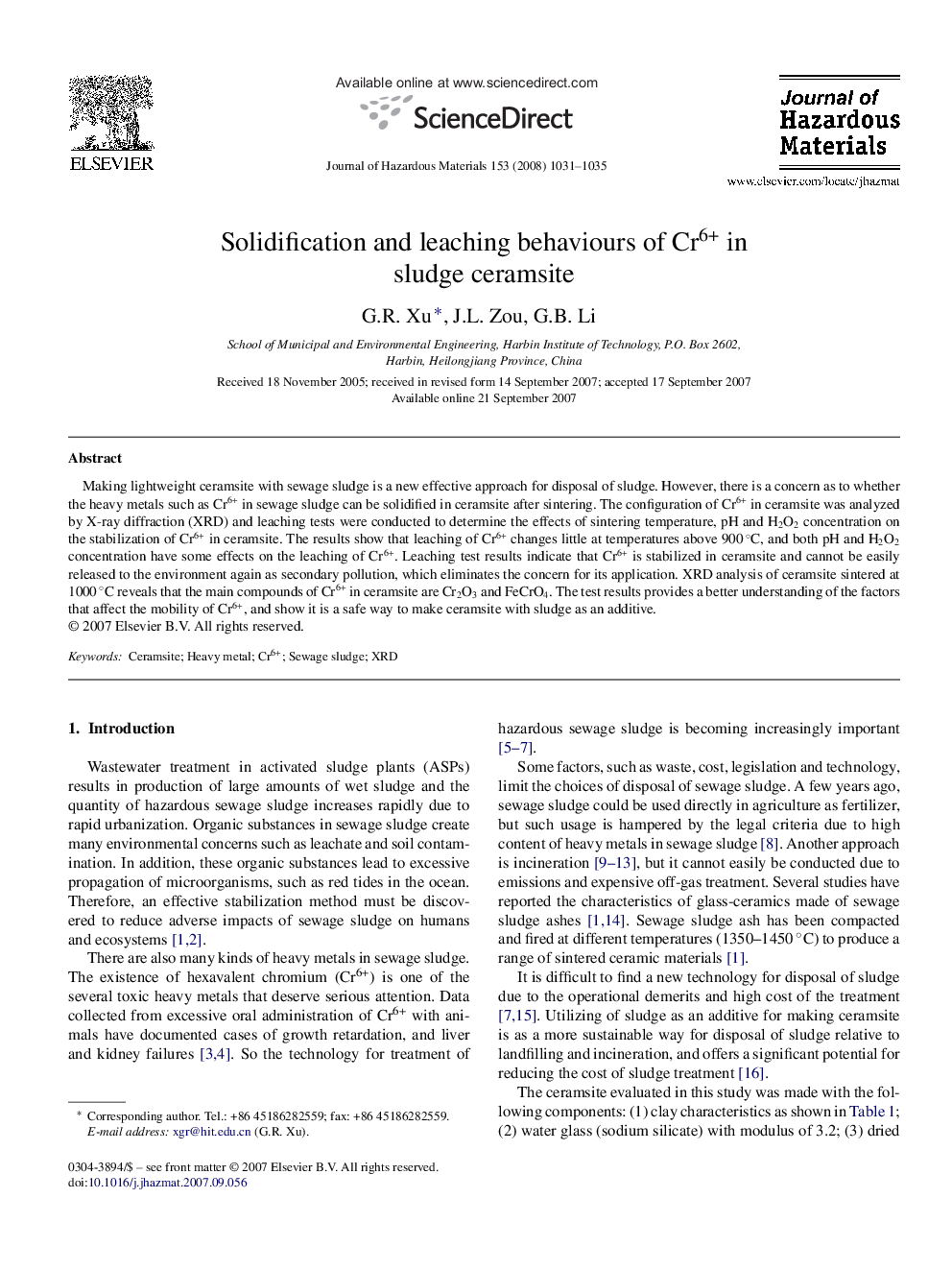| Article ID | Journal | Published Year | Pages | File Type |
|---|---|---|---|---|
| 583036 | Journal of Hazardous Materials | 2008 | 5 Pages |
Abstract
Making lightweight ceramsite with sewage sludge is a new effective approach for disposal of sludge. However, there is a concern as to whether the heavy metals such as Cr6+ in sewage sludge can be solidified in ceramsite after sintering. The configuration of Cr6+ in ceramsite was analyzed by X-ray diffraction (XRD) and leaching tests were conducted to determine the effects of sintering temperature, pH and H2O2 concentration on the stabilization of Cr6+ in ceramsite. The results show that leaching of Cr6+ changes little at temperatures above 900 °C, and both pH and H2O2 concentration have some effects on the leaching of Cr6+. Leaching test results indicate that Cr6+ is stabilized in ceramsite and cannot be easily released to the environment again as secondary pollution, which eliminates the concern for its application. XRD analysis of ceramsite sintered at 1000 °C reveals that the main compounds of Cr6+ in ceramsite are Cr2O3 and FeCrO4. The test results provides a better understanding of the factors that affect the mobility of Cr6+, and show it is a safe way to make ceramsite with sludge as an additive.
Related Topics
Physical Sciences and Engineering
Chemical Engineering
Chemical Health and Safety
Authors
G.R. Xu, J.L. Zou, G.B. Li,
